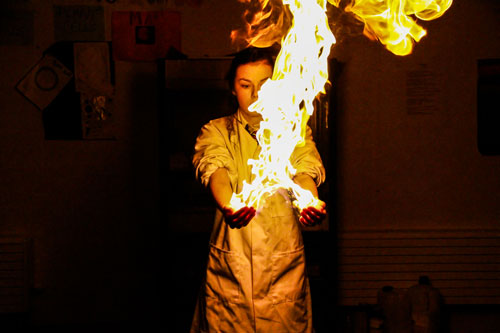Methane-killing UV lights ‘an opportunity for lighting industry’

A breakthrough in the battle against the greenhouse gas methane is being seen as a sustainable and commercial opportunity for the lighting industry.
For the first time, scientists have used UV light and and chlorine to lower the amount of methane in air.
The discovery – by the University of Copenhagen – is important because methane is the greenhouse gas contributing most to climate change after carbon dioxide.
It allows humanity to be be able to remove greenhouse gases from livestock housing, biogas production plants and wastewater treatment plants to help the climate.
Methane is an important greenhouse gas, responsible for around 30 per cent of the rise in global temperatures since the industrial revolution. It has a global warming potential (GWP) of 30 compared to CO2 (potential of 1) over a 100-year period, and 82.5 over a 20-year period. This means that, for example, a leak of one tonne of methane is equivalent to emitting 82.5 tonnes of carbon dioxide.
‘A large part of our methane emissions comes from millions of low-concentration point sources like cattle and pig barns,’ Matthew Stanley Johnson, the University of Copenhagen atmospheric chemistry professor who led the study, told Engineering + Technology magazine. ‘In practice, methane from these sources has been impossible to concentrate into higher levels or remove. But our new result proves that it is possible using the reaction chamber that we’ve have built.’
The team says it will create a proof-of-concept trial installation in the form of a ‘methane cleaner’ that will be connected to the ventilation system in a cattle shed to test the feasibility of installing methane removal mechanisms in agricultural applications.
Researchers believe that the lighting industry – with its experience in UV disinfection systems – is best placed to produce the commercially-available products and systems to implement methane-reduction in buildings and other areas where the gas is produced.
• Pictured: Despite its role as a powerful greenhouse gas, methane bubbles can be burned on a wet hand without injury. Credit: Scohen Photography 2017 via WikiMedia Commons
• Diary date: Circular Lighting Live 2024, Recolight’s flagship conference and exhibition, takes place on Wednesday 9 October 2024 at the Royal College of Physicians in London. Free to specifiers, Circular Lighting Live 2024 will feature leading experts, specifiers and policy makers who will share their insights into forthcoming standards and legislation, emerging technologies and new business models. More info: www.circularlighting.live


